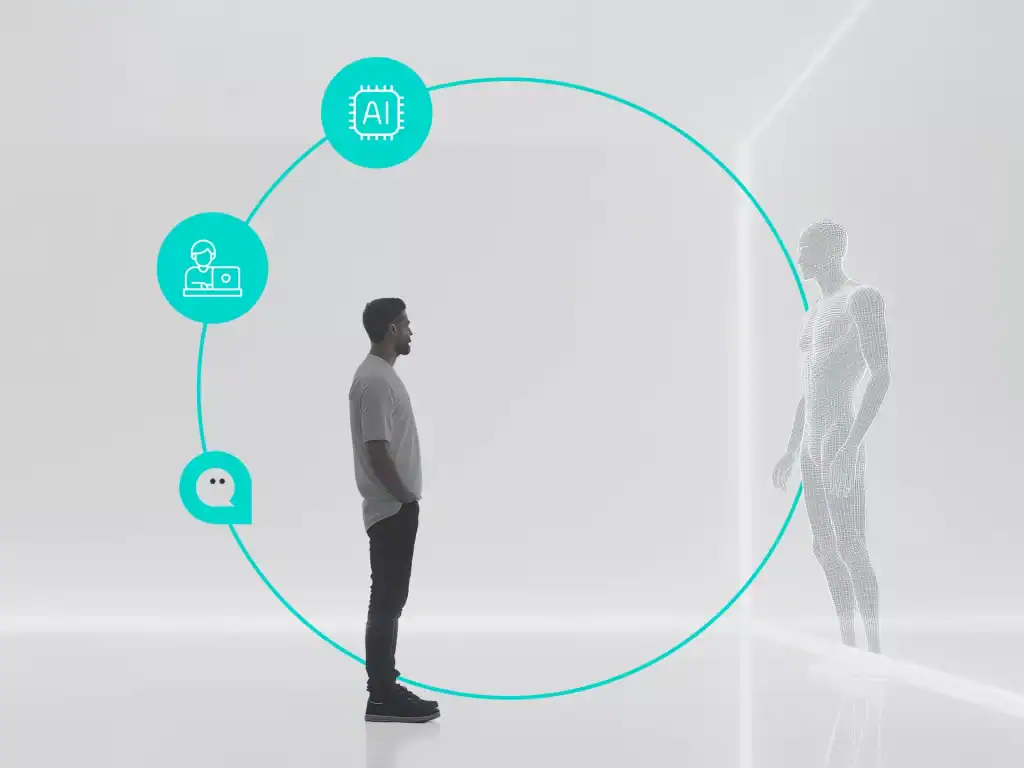With the increasing digitization of services and the shift of customers to increasingly technological channels, expectations in terms of customer experience have evolved radically. Companies must therefore leverage innovative solutions to scale and ensure business continuity, without sacrificing high quality standards.
Against this backdrop, customer support automation is emerging as a key strategy for meeting new market needs. But what exactly is it and how can it be properly implemented? Let’s analyze it in detail.
What is customer support automation
Customer support automation is the process by which part of customer support interactions are automated in order to reduce human involvement in handling complaints and support requests. This is done by leveraging technologies such as chatbots, voicebots, automated workflows, Interactive Voice Response (IVR), email automation, self-service widgets, and internal knowledge wikis. The goal is to simplify support processes by making them more streamlined and efficient. On the one hand, customers can independently obtain information and resolve basic issues; on the other hand, agents have more time to devote to more complex practices that require specialized skills.
Artificial intelligence and machine learning are key elements, as they enable customer support automation tools to constantly improve based on data acquired over time.
Key improvements in customer service through customer support automation
Customer Support Automation aims to improve several critical aspects in customer support, bringing tangible benefits to companies. Recent statistics indicate that customer support automation can reduce operational costs by up to 30 percent, improve response times by 40 percent, and increase customer satisfaction by more than 50 percent. With Customer Support Automation, companies can streamline internal processes, reduce human error, and deliver a personalized and efficient customer experience.
Quick resolution of common cases
By automating standard inquiries, customers can find answers without waiting for an operator. This significantly improves the user experience.
Automatic ticket forecasting and sorting
Artificial intelligence algorithms catalog and route paperwork faster than a human, optimizing the management of incoming workloads.
Increased efficiency and productivity of agents
By automating repetitive tasks, operators have time to deal with the more complex cases that require more expertise.
Cost reduction
Customer support automation reduces staffing for standardizable tasks, lowering operational costs.
24-hour support and scalability
Chatbots and voice assistants make it possible to provide nonstop continuous services while also increasing business.
Data collection for continuous improvement
AI gathers valuable information to continuously optimize solutions, procedures and customer journey.

Building an Automated Customer Support System
Implementing a Customer Support Automation system involves well-considered choices. It is necessary to successfully address issues related to personalization of the customer experience, management of sensitive data, integration with existing systems, and staff training. Companies need to invest in staff training, implementation of state-of-the-art technology, and creation of efficient automated processes to maximize the benefits of Customer Support Automation. Then there are critical aspects to consider when implementing such a system:
- Loss of Human Contact: Automation could reduce direct contact with human operators, creating a gap in the customer experience.
- Sensitive Data Management: Security of customer data is a key concern in customer support automation, requiring strict protocols to protect privacy.
Key steps to effectively automate service delivery
But what are the steps to consider, when choosing such a process?
- Identify processes that can be automated: Activities need to be analyzed in detail to identify repetitive ones that do not require human intervention.
- Build a knowledge base: Create a central collection of FAQs and organized content for customer self-service.
- Implement the right tools: Choose platforms such as chatbots, voicebots, workflows etc that integrate with enterprise systems.
- Integrate with existing systems: Connect automation solutions with customer databases, CRM, helpdesk, and other applications.
- Monitor and improve: Track performance to continuously optimize solutions, workflows, and customer journeys.
XCALLY and customer support automation
XCALLY has decided to adopt trigger & automation in order to expand its ability to handle high volumes of requests while maintaining high quality standards.
- Implement chatbots to autonomously resolve standard cases across all communication channels
- Automate workflows for tasks such as cataloging and ticket sorting
- Provide agents with real-time assistance on business tools during paperwork
This has enabled XCALLY to offer 24/7 support by reducing average response times, improving the customer experience, and freeing up internal resources to devote to more value-added tasks.
Future Challenges in Customer Support Automation
Looking ahead, the challenges related to Customer Support Automation will become increasingly complex. Companies will have to address issues related to data privacy, the artificial intelligence ethics, automated process management, and ever-changing customer expectations.
It will also be crucial that customer support automation does not completely replace the human factor in order to create loyalty and trust in services.






